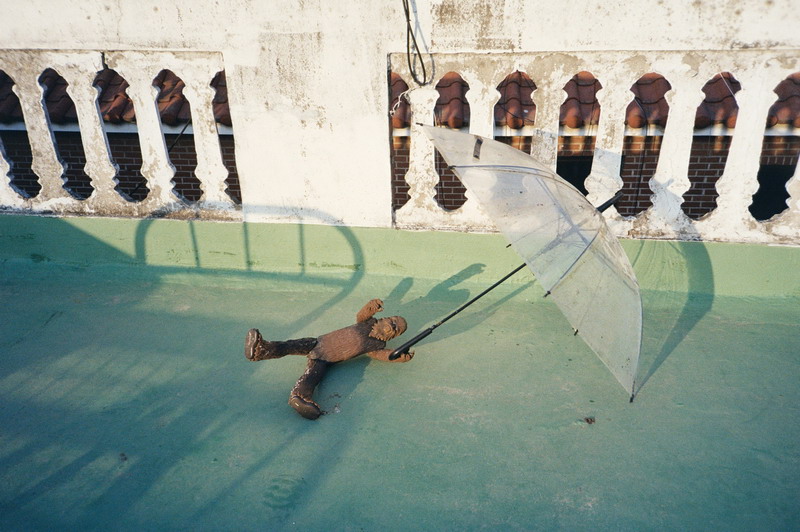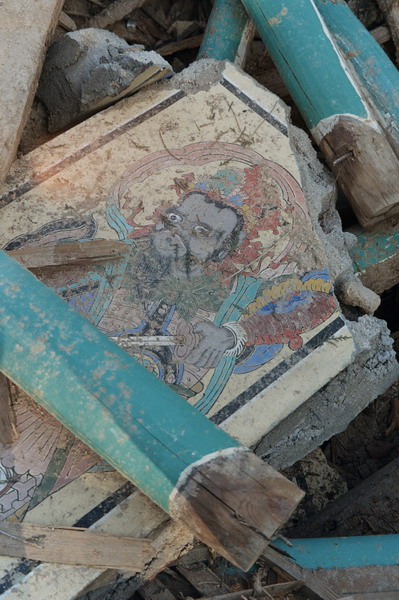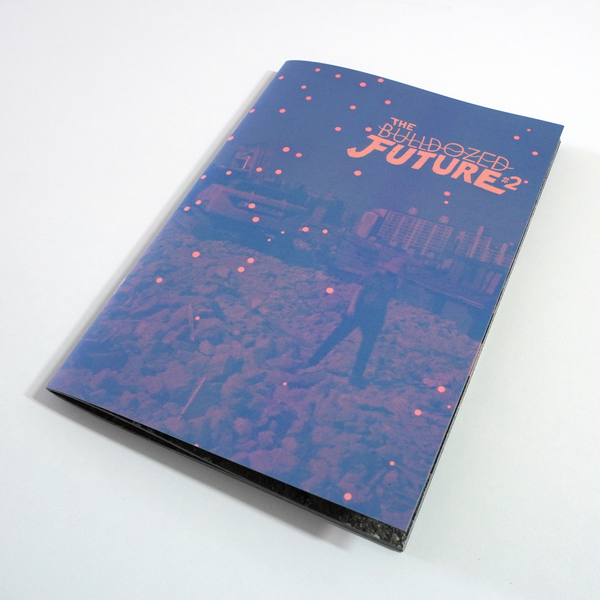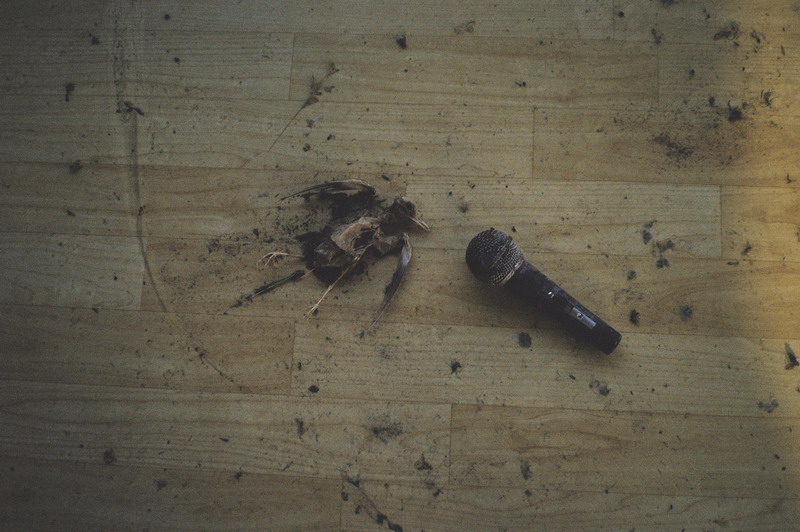The Bulldozed Future: Sequel
Interview with Ryan Berkebile
This spring the Gwangju News carried a feature on The Bulldozed Future, a newborn webzine on urban exploration, as an interview with its Seoul-based urban exploring photographer and editor, Ryan Berkebile (March 2021 issue). Since then Ryan has done more exploring and has come out with the second issue of his webzine. His adventures include numerous explorations in the Gwangju area that make it into the zine’s latest issue. Recently our managing editor caught up with Ryan for this interview. — Ed.
Gwangju News (GN): Hi, Ryan! Thanks for doing this interview. What have you been up to since our last interview back in March?
Ryan Berkebile: Hello! It is always a pleasure to make time for the Gwangju News. Happy 20th anniversary, Gwangju News!
Since we last chatted, I have continued to explore four or five neighborhoods in Seoul in the process of redevelopment, taking photos for future blog posts and zines. In April, I wrote an article about exploring Korea’s urban redevelopment for the Royal Asiatic Society Korea Branch’s annual journal, Transactions. It was an honor to have contributed to the 95th volume of their publication. I hope people can get a chance to read it.
I recently received slides from my grandparents’ short visit to Seoul in 1969. There are some fantastic pictures from the set, and I am trying to figure out what to do with them. These pictures motivate me to keep taking pictures because who will remember what these working-class neighborhoods looked like?

GN: A belated congratulations on the second issue of The Bulldozed Future! How’s this issue different from the first?
Ryan Berkebile: Thank you! It is not much different, except a bit meatier. There are more pages, more juxtaposed images from Korea’s abandonments and condemned neighborhoods. It is a continuation of telling short, visual stories of the moment before a place is gone forever. I prefer to use few words and let the viewer make sense of the scenes. But who knows what will happen in future issues? I might want to contextualize images in later editions to accentuate meaning. At this point, I am still learning to put together issues with pictures that emphasize the bulldozed future in Korea.
GN: Making a magazine is one of those things where you have to learn by doing. What are some skills or perspectives you’ve picked up between issues one and two?
Ryan Berkebile: I am learning a lot about restraint. It would be easy (and very punk rock) to put together an issue by just throwing pictures together without much thought, like a Dadaist collage. Still, I am intentionally slowing down to focus on quality. Without extra perspective from my wife, my untrained eye would want to put what I consider “the best shots” together without considering if they work well with the corresponding image on the next page. I need other people’s input because another viewpoint will help me see the value in photos I might initially toss to the side.

GN: Is a third issue in the works? If so, how are you going to tweak the zine this time?
Ryan Berkebile: Yes, a third issue is in the works. It is in the beginning stages, and I hope to have it out by August, just in time for the Kinektid Book Fair and the Zoom lecture I will give to the Royal Asiatic Society Korea Branch in August. There will not be too much difference between issue three and issues one and two; it will be the same size and feature pictures just like previous issues. Maybe there will be more text, but it depends on what images make the final cut.
GN: I heard issue two is “Gwangju heavy” in terms of content. It may be a perception bias thing, but it seems to me there’s a lot more demolition going on in Gwangju than in other parts of the country. Do you agree? If so, why do you think this is?
Ryan Berkebile: There has been a strong representation of Jeollanam-do and Gwangju in the both of the first two issues of The Bulldozed Future, and I imagine it will continue in future editions. I always enjoy traveling down to Gwangju, meeting with friends, and exploring the region’s forgotten or soon-to-be-redeveloped areas with my adventure partner, Isaiah Winters.

Demolition and redevelopment in Gwangju have picked up over the last seven years since I first visited. I remember Gwangju in 2014 as an incredibly run-down city. It was gritty and super easy to find abandoned hanok houses and other buildings in the city center. I was shocked by all the neglected buildings and neighborhoods of Gwangju; the scenes made an impression on me, and I have been exploring and documenting Korean abandonments (aka K-abandonments) ever since.
While it is great to see significant sites connected to 5.18 [the May 18 Uprising] like the Jeonil Building and the old Red Cross Hospital become revitalized to preserve their historical significance, I see Gwangju going through the same gentrification process that has been happening in Seoul and around the world. Artisans move into working-class neighborhoods because they are affordable. When these areas garner the attention of the upper classes, the rich become the new landlords and raise the rents so that the original residents and artisans have to move out and find a new cheap place to live. Once a neighborhood with distinct character, it becomes an uninteresting strip filled with coffee shops and craft beer bars.

GN: Where can people pick up a copy of your zine?
Ryan Berkebile: I have a few copies available at some independent bookshops in Seoul, like Manyu-inryeok (만유인력, https://www.facebook.com/MANYOUPOWERPEOPLE) and Kinektid Bookstore (https://kenektidxbookstore.shop/), but the best way to get one is directly from me. Please shoot me a message at longdistancerunner.org to purchase one. At this point, I am only sending out physical copies to people living in Korea. Postage is still expensive to send out across the world. If anyone living abroad is interested in buying the zine, you can purchase PDF copies through gumroad.com.
GN: Do you have any recent adventures or exploits you’d like to share?
Ryan Berkebile: I think the recent visit to Gwangju’s Hak-dong area is the adventure that stands out. Who knew that there would be a tragedy just after our most recent visit to the neighborhood? Hak-dong was a long-term exploration for Isaiah Winters and me. In early 2020, demolition crews began to tear down the area in earnest. We found many cool things like a calligraphy hagwon and a photographer’s house filled with countless images throughout Korea’s yesteryear (see Isaiah’s article in the July 2020 issue of the Gwangju News). Throughout the pandemic, we kept tabs on the progress of Hak-dong’s demolition. On May 30 of this year, on a whim, my friends and I went to check out the redevelopment one last time to see if there was anything left. Indeed, a few abandonments were still standing, with the few people still occupying buildings protesting their evictions. It was a relatively quick and relaxed stroll through Hak-dong. Then ten days later, a building (and area) that Isaiah and I had never explored in earnest collapsed, killing nine and injuring eight. As soon as I saw the pictures of the scene, I immediately recognized the place, and my heart sank.

GN: As an urban explorer, what are your thoughts on that tragic (and completely preventable) building collapse in Hak-dong? Has it made you rethink this passion of yours?
Ryan Berkebile: It is the latest in a long line of tragedies in the country that would have been prevented if companies observed proper safety protocols. The government also needs to hold those people who do not follow them more accountable. Frankly, I am surprised this has not happened more often. It seems that governing bodies ignore whistleblowers’ complaints as the norm. People are only shocked after the fact.
As for how I go about urban exploring, the disaster has not deterred me from continuing. The risks that come with urban exploration are numerous. I am not a high-risk-taker myself; I am not willing to do anything too crazy at great heights. The risky situations I usually put myself in are climbing over or under small walls, walking over glass shards, or exposing myself to mold or asbestos. Even before the pandemic, I made it a habit of wearing masks while in highly moldy locations. With that said, there will always be unknown risks while exploring abandonments and redevelopments in Korea. I am willing to accept these risks, as I have developed a deeper appreciation of Korea through unorthodox means.
GN: Please add anything else you’d like to mention!
Ryan Berkebile: As I mentioned earlier, I have contributed an article on exploring Korea’s urban redevelopment zones to the most recent edition of Transactions, the annual journal put out by the Royal Asiatic Society Korea Branch (http://raskb.com). If you are interested in Korean culture and history, I recommend joining and supporting the world’s oldest Korean studies organization! While speaking of RASKB, I want to mention that I will be giving a Zoom lecture about my explorations on August 10. Feel free to join or watch my address on YouTube afterwards. The talk also coincides with the release of issue number three of The Bulldozed Future. The best way to get a physical copy is through me directly at my website, longdistancerunner.org.
GN: Thank you, Ryan. We wish you the best with your upcoming presentation, your webzine, and your urban explorations.
Interviewed by William Urbanski.
Photographs courtesy of Ryan Berkebile.
The Interviewee
When Ryan Berkebile isn’t taking photos of abandoned neighborhoods, he writes blog posts for his website, Long Distance Runner. He is about to release the third issue of his photography, The Bulldozed Future, soon. You can find out more about this and other projects at longdistancerunner.org and on Instagram @l0ngdistancerunner and @naturaryan1600




